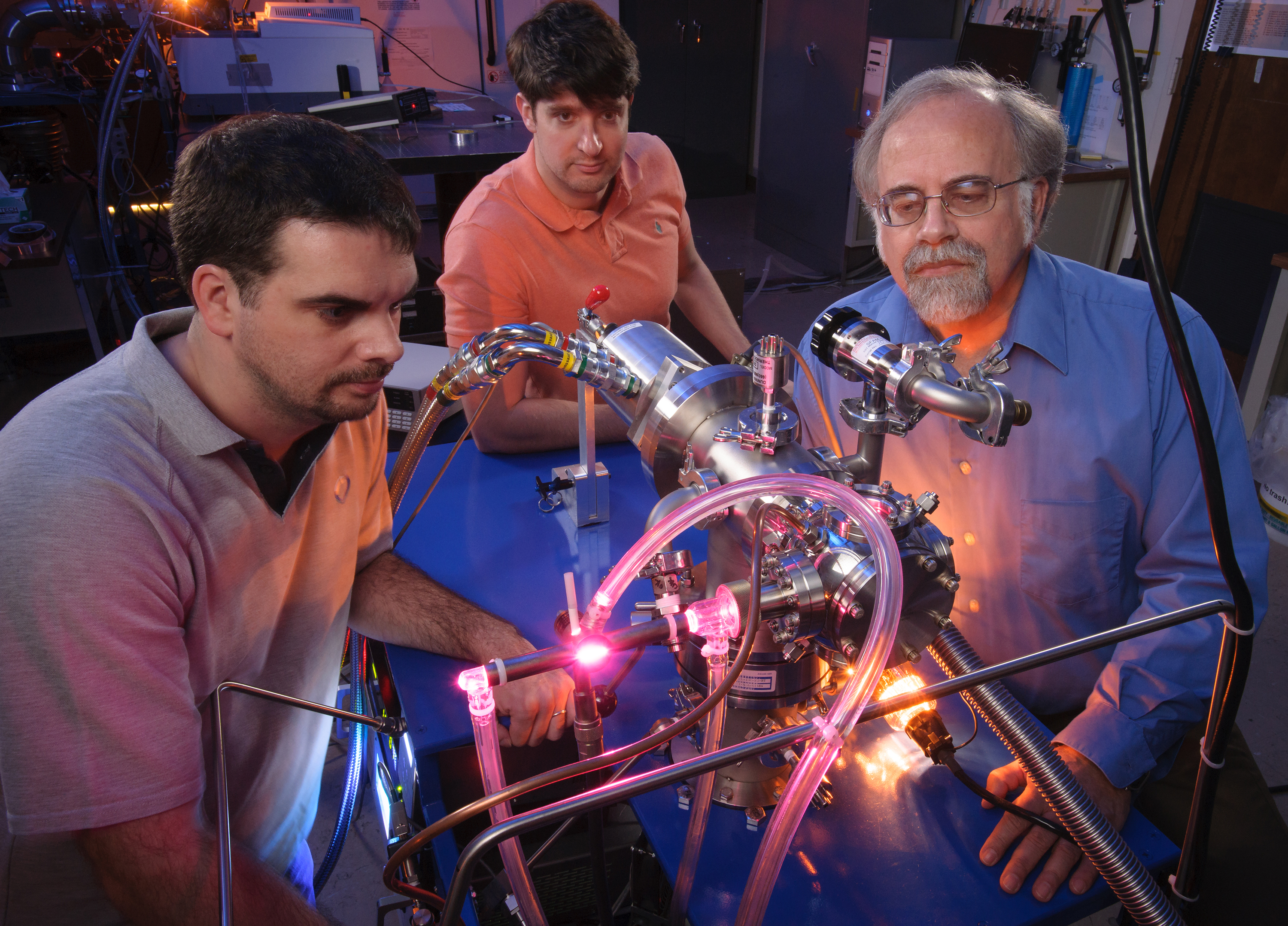-
Abiotic Formation of the Sugar of DNA
December 21, 2018 / Written by: NASA
In the Astrophysics and Astrochemistry Lab at NASA's Ames Research Center, researchers Michel Nuevo, Christopher Materese, and Scott Sandford study the cosmic origins of molecules that are important to life. Credits: NASA/Ames Research Center/Dominic HartThe NASA Astrobiology Institute team based at the NASA Ames Research Center have successfully produced 2-Deoxyribose—the sugar component of DNA—from ultraviolet irradiation of water and methanol mixtures under simulated astrophysical conditions. These experiments were conducted in the Astrochemistry Laboratory at Ames and suggest that the compounds to start life could have been delivered via asteroids and comets.
“Deoxyribose and deoxysugar derivatives from photoprocessed astrophysical ice analogues and comparison to meteorites” is published in Nature Communications.
Excerpt from the feature story published by NASA:
When we think of sugar, it’s in the form of a holiday sweet or a reason to head back to gym after New Year’s Eve — we don’t usually think of the complex varieties that form the structural backbones of our very genetic code. And we certainly don’t think of sugar floating around in the vast darkness of space.
New research suggests that the sugar molecule that puts the “D” in DNA — 2-deoxyribose — could exist in the far reaches of space. A team of NASA astrophysicists were able to create DNA’s sugar in laboratory conditions that mimic interstellar space.
The researchers believe their results, published on Tuesday in Nature Communications, show that yet another of life’s critical chemical building blocks could be widespread in the universe and potentially seed other planets as well.
“We don’t yet know whether life is common in the universe, but we’re pretty sure the presence of life’s building blocks is not a limiting factor,” said Michel Nuevo, a researcher at NASA’s Ames Research Center in California’s Silicon Valley and the lead author of the paper.
The results represent the first solid evidence of the formation of DNA’s sugar in an astrophysical setting.
Read the full story at the NASA Ames Research Center website.
Source: [Nature Communications (via NASA Ames Research Center)]
- The NASA Astrobiology Institute Concludes Its 20-year Tenure
- Global Geomorphologic Map of Titan
- Molecular Cousins Discovered on Titan
- Interdisciplinary Consortia for Astrobiology Research (ICAR)
- The NASA Astrobiology Science Forum Talks Now on YouTube
- The NASA Astrobiology Science Forum: The Origin, Evolution, Distribution and Future of Astrobiology
- Alternative Earths
- Drilling for Rock-Powered Life
- Imagining a Living Universe
- Workshops Without Walls: Astrovirology